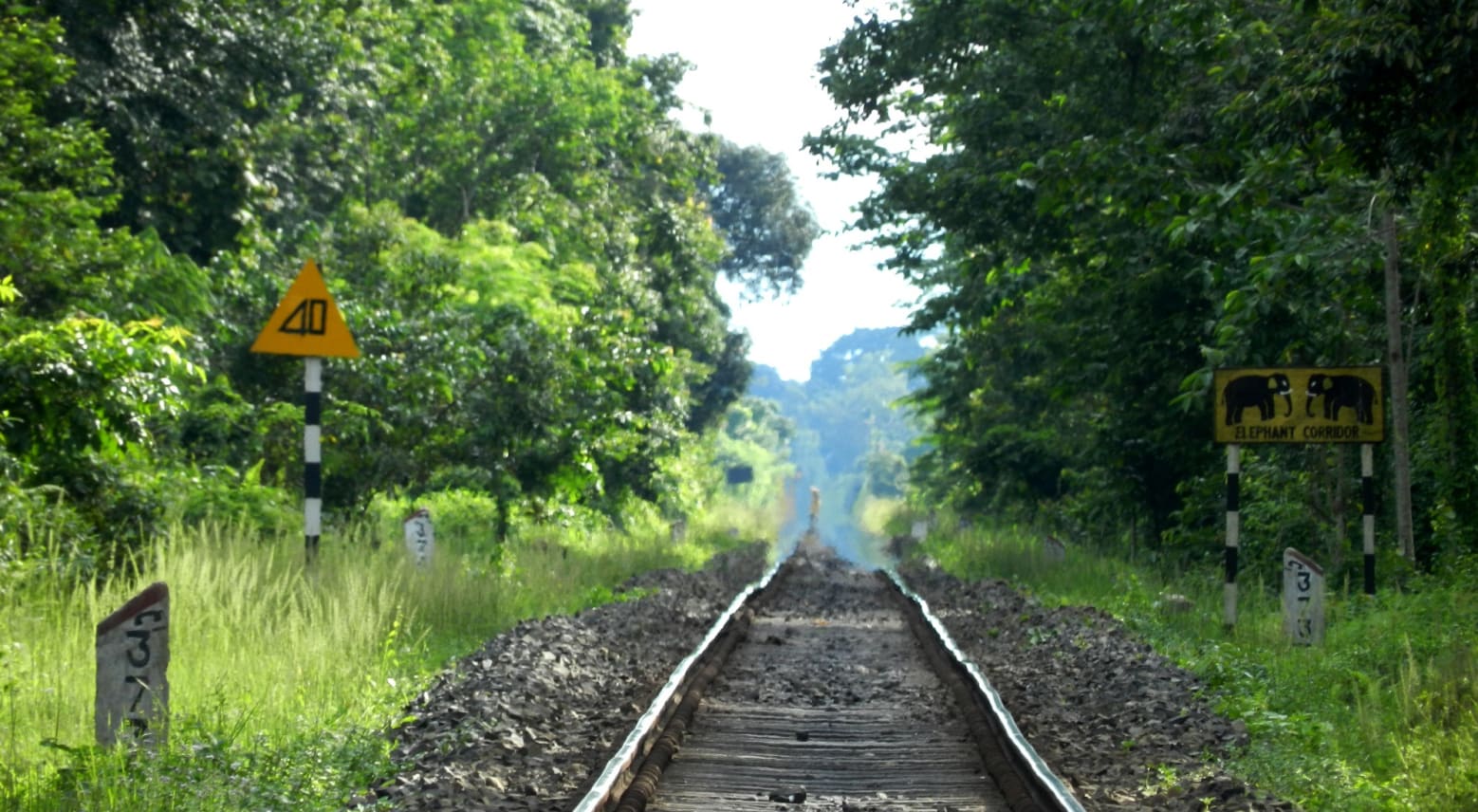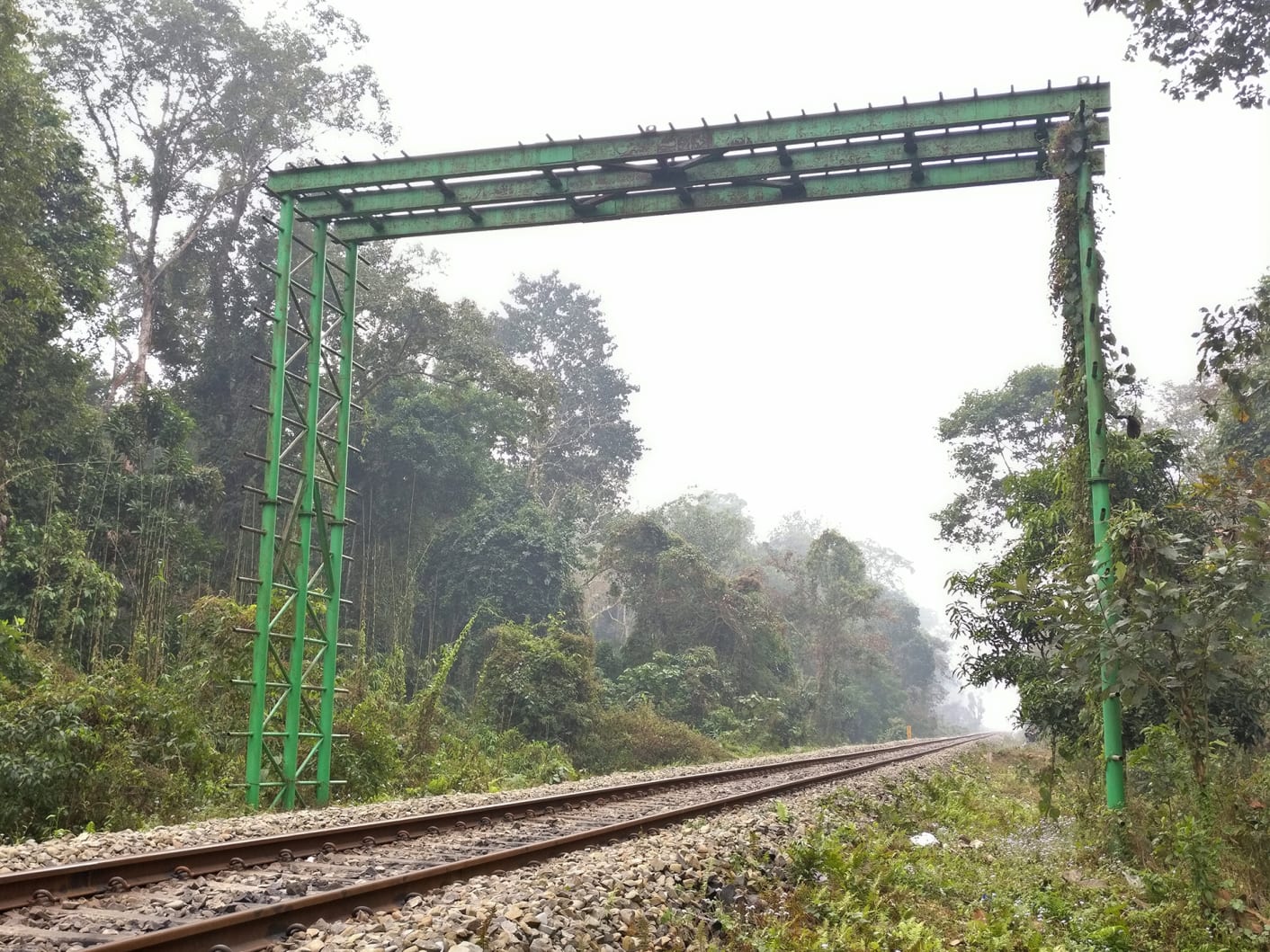 Listen to this article
•
15:34 min
Listen to this article
•
15:34 min
When the British began setting up tea estates in Assam in the late 1800s, the need for transportation and connectivity arose. Extensive rail lines were laid, including the Meleng Railway that runs through the 20.98 sq km Hollongapar Gibbon Sanctuary in Assam’s Jorhat district.
The century-old rail line, which connects major towns such as Guwahati and Dibrugarh, is perhaps the most pressing of the many conservation concerns that plague the sanctuary.

To access the sanctuary, my car veers off the main Dhodhar Ali Road and stops at a rail track, which neatly slices the forest into two parts. At around three sq km, Compartment One is a small swatch of jungle isolated from the remainder of the forest on the other side of the tracks.
An eerie abandoned railway station stands near the sanctuary’s entrance. I hop across the tracks to the area’s beat office, where I meet Beat Officer Rupak Bhuyan.
He tells me that though the length of the rail line within the sanctuary’s area is a mere 1.6 kilometres, it poses a massive threat to all of the jungle’s inhabitants.
Hoolock gibbons, the sanctuary’s flagship species, are arboreal creatures. As a species that does not descend to the forest floor, they need contiguous canopy cover for movement. The rail line creates a significant gap in the forest’s canopy, effectively isolating the hoolock gibbons in Compartment One from those in the rest of the forest.
As per the census in 2008-09, five gibbon families were stranded in the tiny forest patch. Apart from the obvious challenges of depleting food resources, this isolation could also have consequences for future generations of the ape species, as hoolock gibbons do not mate within family lines.
Measures are being taken to work around the problems created by the canopy gap. In 2015, the Forest Department constructed a bridge across the rail line, meant to act as a link between the two parts of the forest.

As I walk towards the bridge, I see that it ends rather awkwardly, not fully extending into the canopy on either side. Bamboo ropes connect the edges of the bridge to the upper branches of the nearby trees. A bizarre visual in an otherwise beautiful forest, and a measure that has, unfortunately, not served its purpose. The hoolock gibbons have never once used the bridge to cross over.
In the distance, my guide points to a spot where two trees from either side of the tracks meet in an arch, effectively connecting the canopy. The arch is rather low, and gibbons, who inhabit only the upper canopy, do not use this as a point of crossing either.
Officials and experts believe this could be an alternative way to create canopy continuity. “Recently we planted more than a 100 trees along the rail line,” Beat Officer Bhuyan tells me. Planting efforts are underway, with preference given to food trees preferred by the primates, such as the ficus and hingori. The hope is that when the trees mature, future generations of primates will no longer live in isolation.
Trains passing through the wilderness bring with them a slew of other problems. Amidst this glorious forest of towering hollong trees, darting squirrels, and bold-hued butterflies, it is disheartening to see trash lying along the length of the tracks.
Plastic bottles and paper plates with scraps of food lie at my feet. To the jungle’s terrestrial inhabitants and the rhesus macaques that frequently forage along the rail tracks, garbage poses a serious threat.
A bright yellow board by the rail line marks an ‘Elephant Corridor’, where a narrow trail diverges into the forest. To migrate to the Desoi Valley Reserve Forest along the Assam-Nagaland border, wild pachyderms have to take this path and cross the rail tracks. Though the speed limit for trains within the sanctuary is 30 kmph, fast moving locomotives have caused the death of several elephants, primates, and reptiles. In Assam, 27 elephants were killed in train-related accidents between 2016-18.
It is evident that much more needs to happen to preserve this small sanctuary and its unique inhabitants. For the sake of all the forest’s residents, we can only hope that the conservation measures planned will eventually bear fruition.




